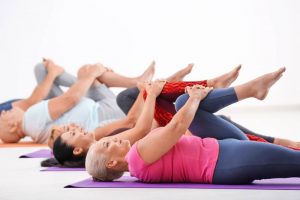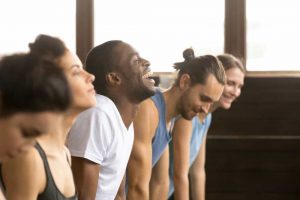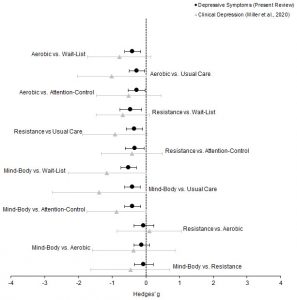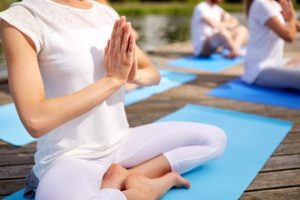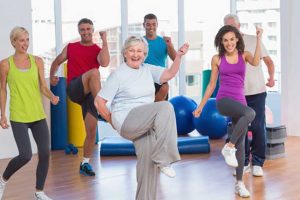Decrease the Development of Diabetes in At-risk Patients with Yoga
By John M. de Castro, Ph.D.
“Yoga can do more than just relax your body in mind — especially if you’re living with diabetes. Certain poses may help lower blood pressure and blood sugar levels while also improving circulation, leading many experts to recommend yoga for diabetes management.” – Emily Cronkleton
Diabetes is a major health issue. It is estimated that 30 million people in the United States and nearly 600 million people worldwide have diabetes, and the numbers are growing. Type II Diabetes results from a resistance of tissues, especially fat tissues, to the ability of insulin to promote the uptake of glucose from the blood. As a result, blood sugar levels rise producing hyperglycemia. Diabetes is heavily associated with other diseases such as cardiovascular disease, heart attacks, stroke, blindness, kidney disease, and circulatory problems leading to amputations. As a result, diabetes doubles the risk of death of any cause compared to individuals of the same age without diabetes.
Type 2 diabetes is a common and increasingly prevalent illness that is largely preventable. One of the reasons for the increasing incidence of Type 2 Diabetes is its association with overweight and obesity which is becoming epidemic in the industrialized world. A leading cause of this is a sedentary lifestyle. Unlike Type I Diabetes, Type II does not require insulin injections. Instead, the treatment and prevention of Type 2 Diabetes focuses on diet, exercise, and weight control. Recently, mindfulness practices have been shown to be helpful in managing diabetes. A mindfulness practice that combines mindfulness with exercise is yoga and it has been shown to be helpful in the treatment of Type II Diabetes. But it is not known if yoga practice can prevent people at risk for diabetes to actually become diabetic.
In today’s Research News article “Effectiveness of a Yoga-Based Lifestyle Protocol (YLP) in Preventing Diabetes in a High-Risk Indian Cohort: A Multicenter Cluster-Randomized Controlled Trial (NMB-Trial).” (See summary below or view the full text of the study at: https://www.ncbi.nlm.nih.gov/pmc/articles/PMC8231281/ ) Raghuram and colleagues recruited adults at risk for the development of Type 2 diabetes based upon HbA1c levels and randomly assigned them to receive yoga lifestyle training or to a treatment as usual control condition. Lifestyle training occurred in 9 sessions followed by 3 months of daily practice and included postures, breathing exercises, meditation, and relaxation. They were measured before and after training for HbA1c levels, body size, blood pressure, and physical activity.
They found that at the end of the yoga lifestyle intervention that significantly fewer of the yoga group transitioned into diabetes (11%) compared to the control condition (32%). In addition, significantly greater number of yoga lifestyle patients transitioned from prediabetes to normoglycemia than the controls. Hence the yoga intervention was successful in making it less likely that patients at risk for diabetes transition to full-fledged diabetes.
The weakness in the study was that the control condition did not receive any treatment. This leaves open some confounding interpretations of the results including placebo effects, attentional effects, experimenter bias etc. Future research should use an active control condition such as another exercise or game playing. But previous controlled research has demonstrated that yoga practice improves blood glucose levels and improve the health of patients with diabetes. So, it is likely that yoga and not some confounding factor was responsible for the improvements in the prediabetic patients.
So, decrease the development of diabetes in at-risk patients with yoga.
“Yoga is considered to be a promising, cost-effective option in the treatment and prevention of diabetes, with data from several studies suggesting that yoga and other mind-body therapies can reduce stress-related hyperglycemia and have a positive effect on blood glucose control.” – Diabetes UK
CMCS – Center for Mindfulness and Contemplative Studies
This and other Contemplative Studies posts are also available on Google+ https://plus.google.com/106784388191201299496/posts and on Twitter @MindfulResearch
Study Summary
Raghuram, N., Ram, V., Majumdar, V., Sk, R., Singh, A., Patil, S., Anand, A., Judu, I., Bhaskara, S., Basa, J. R., & Nagendra, H. R. (2021). Effectiveness of a Yoga-Based Lifestyle Protocol (YLP) in Preventing Diabetes in a High-Risk Indian Cohort: A Multicenter Cluster-Randomized Controlled Trial (NMB-Trial). Frontiers in endocrinology, 12, 664657. https://doi.org/10.3389/fendo.2021.664657
Abstract
Introduction
Though several lines of evidence support the utility of yoga-based interventions in diabetes prevention, most of these studies have been limited by methodological issues, primarily sample size inadequacy. Hence, we tested the effectiveness of yoga-based lifestyle intervention against diabetes risk reduction in multicentre, large community settings of India, through a single-blind cluster-randomized controlled trial, Niyantrita Madhumeha Bharat Abhiyan (NMB).
Research Design and Methods
NMB-trial is a multicentre cluster-randomized trial conducted in 80 clusters [composed of rural units (villages) and urban units (Census Enumeration Blocks)] randomly assigned in a 1:1 ratio to intervention and control groups. Participants were individuals (age, 20–70 years) with prediabetes (blood HbA1c values in the range of 5.7–6.4%) and IDRS ≥ 60. The intervention included the practice of yoga-based lifestyle modification protocol (YLP) for 9 consecutive days, followed by daily home and weekly supervised practices for 3 months. The control cluster received standard of care advice for diabetes prevention. Statistical analyses were performed on an intention-to-treat basis, using available and imputed datasets. The primary outcome was the conversion from prediabetes to diabetes after the YLP intervention of 3 months (diagnosed based upon HbA1c cutoff >6.5%). Secondary outcome included regression to normoglycemia with HbA1c <5.7%.
Results
A total of 3380 (75.96%) participants were followed up at 3 months. At 3 months post-intervention, overall, diabetes developed in 726 (21.44%) participants. YLP was found to be significantly effective in halting progression to diabetes as compared to standard of care; adjusted RRR was 63.81(95% CI = 56.55–69.85). The YLP also accelerated regression to normoglycemia [adjusted Odds Ratio (adjOR) = 1.20 (95% CI, 1.02–1.43)]. Importantly, younger participants (≤40 years) were found to regress to normoglycemia more effectively than the older participants Pinteraction<0.001.
Conclusion
Based on the significant risk reduction derived from the large sample size, and the carefully designed randomized yoga-based intervention on high-risk populations, the study is a preliminary but strong proof-of-concept for yoga as a potential lifestyle-based treatment to curb the epidemic of diabetes. The observed findings also indicate a potential of YLP for diabetes prevention in low/moderate risk profile individuals that needs large-scale validation.
https://www.ncbi.nlm.nih.gov/pmc/articles/PMC8231281/
